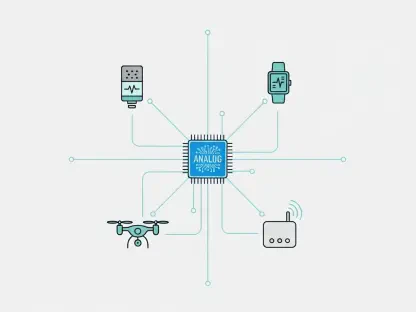Imagine a world where video processing is not only faster but also smarter, adapting to the latest hardware advancements and harnessing artificial intelligence to simplify complex tasks. FFmpeg 8.0, the latest major update to the renowned open-source media processing tool, brings this vision closer to reality. This release, hailed by developers as one of the most significant in the project’s history due to extensive delays and infrastructure overhauls, introduces a host of groundbreaking features that promise to redefine how video content is handled across platforms like Linux and beyond. With cutting-edge technologies such as Vulkan compute-based codecs and AI-driven tools integrated into its framework, FFmpeg 8.0 offers enhanced performance, broader compatibility, and innovative solutions for both professionals and enthusiasts. This update marks a pivotal moment in media technology, reflecting a commitment to pushing boundaries and addressing the evolving needs of users in an increasingly digital landscape.
Harnessing Vulkan for Next-Gen Video Processing
The spotlight of FFmpeg 8.0 shines brightly on its integration of Vulkan compute-based codecs, a transformative approach to video encoding and decoding. Unlike traditional hardware accelerators that rely on dedicated media decoders in modern GPUs, Vulkan compute taps into general-purpose compute cores via shaders, ensuring compatibility with any Vulkan 1.3 implementation. This method prioritizes intensive codecs optimized for parallel processing over mainstream formats already well-supported by GPU accelerators. Currently, FFmpeg 8.0 supports Vulkan for FFv1 in both encoding and decoding, as well as ProRes RAW for decoding, with plans to include ProRes and VC-2 in upcoming minor updates. This advancement unlocks significant speed improvements on compatible hardware, paving the way for enhanced desktop video editing, lossless screen recording, and streaming applications. Such capabilities are poised to benefit specialized workflows where performance is critical, offering a glimpse into the future of video processing technology.
Beyond the technical specifics, the adoption of Vulkan compute in FFmpeg 8.0 signals a strategic shift towards greater hardware flexibility and efficiency. This approach caters to niche yet vital use cases, ensuring that even users with diverse or older hardware setups can leverage high-performance video processing without needing dedicated accelerators. The potential impact on professional and enthusiast communities is substantial, as it lowers barriers to accessing advanced tools for content creation and media handling. Moreover, the focus on parallel processing optimization hints at future scalability, where more codecs and applications could benefit from similar enhancements. While not aimed at replacing mainstream GPU accelerators, Vulkan compute fills a crucial gap for specific, demanding tasks, demonstrating FFmpeg’s forward-thinking approach to compatibility and performance. As hardware continues to evolve, this feature positions the tool as a versatile solution for a wide array of video-related challenges.
AI Innovations and Enhanced User Accessibility
Another remarkable stride in FFmpeg 8.0 is the incorporation of AI-driven features, most notably the Whisper audio transcription filter. This tool utilizes artificial intelligence to automatically generate subtitles for videos and podcasts, streamlining a process that traditionally requires significant manual effort. Such innovation highlights FFmpeg’s dedication to enhancing user experience by integrating modern technologies that address practical needs. The ability to transcribe audio content with high accuracy opens up new possibilities for content creators, educators, and media professionals who rely on accessible and inclusive materials. This feature not only saves time but also broadens the reach of video content to diverse audiences, including those with hearing impairments, by providing seamless captioning options directly within the FFmpeg ecosystem.
Complementing the AI advancements, FFmpeg 8.0 also introduces a range of new filters and hardware acceleration options to boost usability. A notable addition is the d3d11 hardware scaling filter, which enables GPU-accelerated video resizing, delivering faster processing speeds compared to traditional CPU-based methods. This improvement is particularly beneficial for users handling high-resolution content or real-time video manipulation. Alongside this, the update expands native and hardware-accelerated support for an array of formats, including Vulkan VP9, VAAPI VVC, OpenHarmony ##64/5, and AV1, as well as emerging formats like MCC, G.728, and APV. These enhancements ensure that users have access to the latest standards in video encoding and decoding, maintaining FFmpeg’s reputation as a comprehensive tool for media processing. The blend of AI functionality and hardware optimization underscores a commitment to making complex tasks more approachable for a wide user base.
Broader Impacts and Future Outlook
FFmpeg 8.0 goes beyond technical upgrades, reflecting a deeper evolution in the project’s infrastructure and community engagement. The release coincides with modernization efforts, including an upgraded mailing list and the acceptance of contributions through a dedicated coding platform. These changes signify a strong focus on improving development processes and fostering collaboration among contributors worldwide. Such initiatives ensure that FFmpeg remains a dynamic, community-driven project capable of adapting to emerging trends and user demands. The emphasis on modernization also hints at a more streamlined approach to future updates, potentially reducing delays that have marked past releases and ensuring quicker delivery of new features to end-users.
Looking back, the rollout of FFmpeg 8.0 marked a defining moment in media processing, as it successfully blended Vulkan compute codecs with AI-powered tools to elevate performance and accessibility. The support for diverse formats and filters further cemented its status as an indispensable resource for media professionals and hobbyists alike. As users navigated the update, many found inspiration in exploring its command-line capabilities directly, despite slower adoption by frontend applications and certain Linux distributions. Moving forward, the focus should shift to encouraging broader integration of this version into GUI tools and distros, ensuring that all users can tap into its potential. Experimenting with Vulkan compatibility on varied hardware and leveraging AI features for creative projects could also drive innovation. This release laid a robust foundation, inviting the community to build upon its advancements with anticipation for what future updates might bring.









